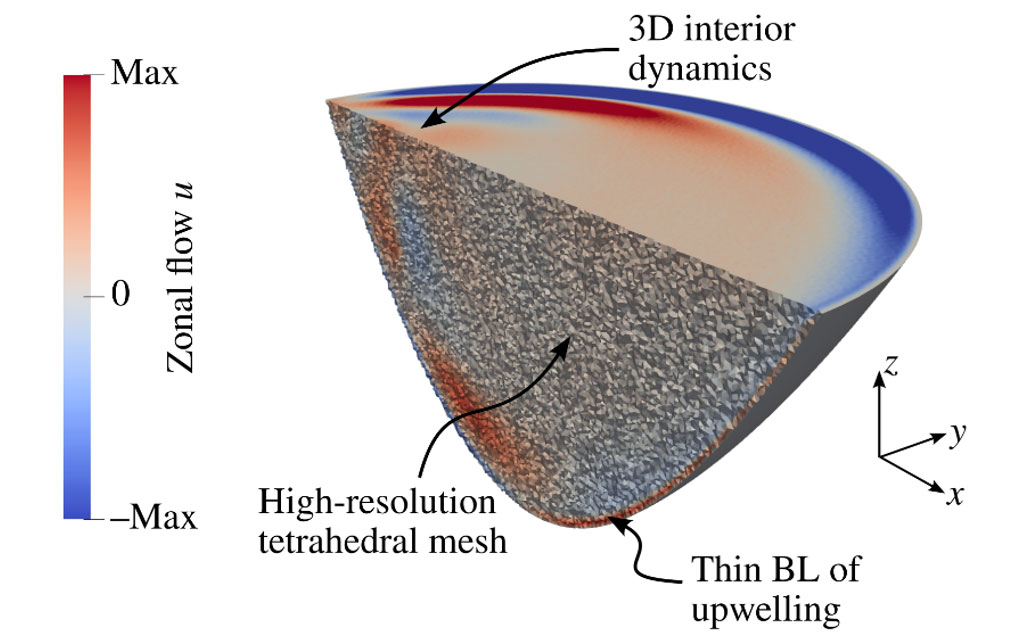
Projects
Modelling the Mixing-Generated Abyssal Ocean Circulation
SASE: Henry Peterson (Division of Geological and Planetary Sciences), SASE GRA Fellow
The cold, dense water that fills the ocean's abyss holds the vast majority of the carbon and heat in the atmosphere–ocean system, regulating climate on 1000-year timescales. For this bottom water to return to the surface and complete the loop of the ocean's overturning circulation, it must mix with the lighter water above it. Ship-based observations show that this turbulent mixing is strongly heterogeneous and most vigorous over rough topography, suggesting that upwelling is confined to the bottom O(10 m) of the ocean. This presents major challenges for both observing and simulating the large-scale ocean circulation, as even state-of-the-art global ocean models have a resolution of O(100 m) near the bottom. To understand how these thin bottom boundary layers shape the three-dimensional abyssal circulation, we need a numerical model that can resolve both.

Snapshot of zonal (x-direction) component of the flow u in half of the bowl domain.
Under the mentorship of Joern Callies (link: https://jcallies.com/ ), Peterson has developed the beginnings of such a model using the finite element method to solve the planetary geostrophic equations, a set of non-linear partial differential equations describing the large-scale dynamics of a rotating, stratified fluid. The model is open source and written in Julia, utilizing its speed, high-level syntax, and support for GPUs. In collaboration with the Schmitt Academy, Peterson aims to significantly enhance the model’s efficiency, scalability, and user-friendliness to garner use by others in the field. Currently, no other model exists that can resolve abyssal boundary layers over sloping topography while also being able to simulate the overturning circulation. Our model could be used to answer many outstanding questions in the field, from explaining how the overturning may have played a role during glacial periods to uncovering the mechanisms behind and implications of recently observed abyssal warming. Once we can elucidate the role that thin bottom boundary layers play in these processes, parameterizations can be developed to represent their effect in global climate models used to inform climate policy. The novel use of finite elements for a large-scale ocean model may also pave the way for numerical advances in the field. Overall, the open source, user-oriented nature of the software will encourage use by other groups and allow it to evolve far beyond the scope of a PhD thesis.